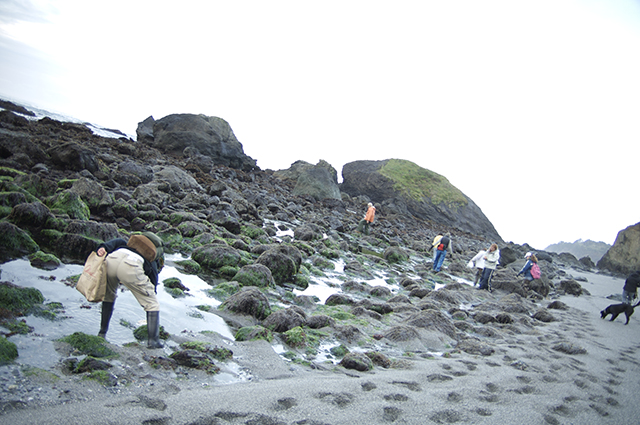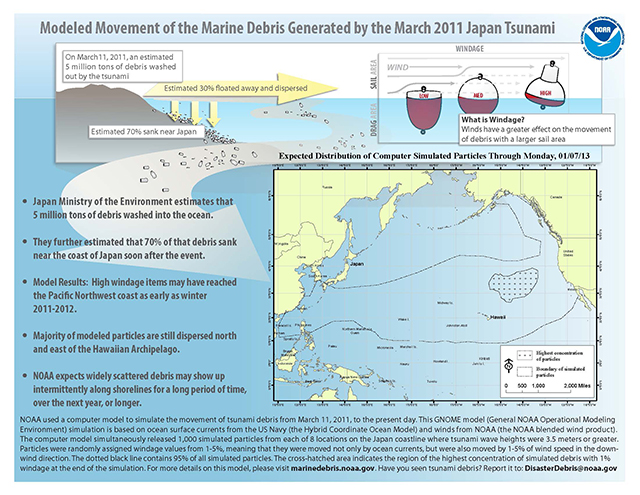According to HSU geology professor and tsunami expert Lori Dengler, residents from Alaska to northern California may witness a swell in marine trash as items from the 2011 Japanese tsunami make their way to the Pacific coast in coming months.

But don’t worry: tsunami debris is no different from any other marine trash, nor is it radioactive. Plus, local beachgoers can lend a hand by reporting ocean trash to Humboldt State’s Marine Debris Program.
“The nuclear releases didn’t occur until long after the debris was washed out to sea and the debris found outside Fukushima hasn’t shown any radioactivity,” says Dengler.
Things You Should Know
That being said, if you do come across items that appear to be hazardous—like gas cans or oil drums—act accordingly. Never touch an item you can’t identify and always report potentially dangerous or large items—like boats and shipping containers—to 911.
Since the tsunami, the National Oceanic and Atmospheric Administration has been working with Japanese officials to return personal items lost in the disaster to their owners. If you come across items with markings or insignia that appear to have personal or monetary value, report them to disasterdebris@noaa.gov.

Dengler says that most items—like wood, plastic and Styrofoam—can be easily recycled or properly disposed of. The overwhelming majority of tsunami debris will be indistinguishable from normal marine trash, which is a growing problem in the world’s oceans.
Garbage that enters the ocean is typically blown by the wind or carried by currents into oceanic gyres, where it’s caught in a large system of rotating currents, Dengler explains. A common example is the Great Pacific Garbage Patch, located between Hawaii and California.
“Debris from the Japanese tsunami highlights the much bigger and longer term problem of debris from human activities in the world’s oceans,” Dengler explains. “The only way to minimize the impacts of debris is to reduce the amounts going into the ocean in the first place.”
Dengler is also part of the Redwood Coast Tsunami Work Group, a coalition of local and federal agencies that reduces earthquake and tsunami hazards in Humboldt, Mendocino and Del Norte counties. For more information, visit humboldt.edu/rctwg.
HSU’s Marine Debris Program
Want to help clean up your local beach?
Last semester, oceanography student Anna Neumann started the Marine Debris Program, which helps keep local beaches healthy and clean. The program hosts regular beach cleanups for students and the community. There’s also a form for reporting marine debris online.
For more information, visit humboldt.edu/marinedebris.